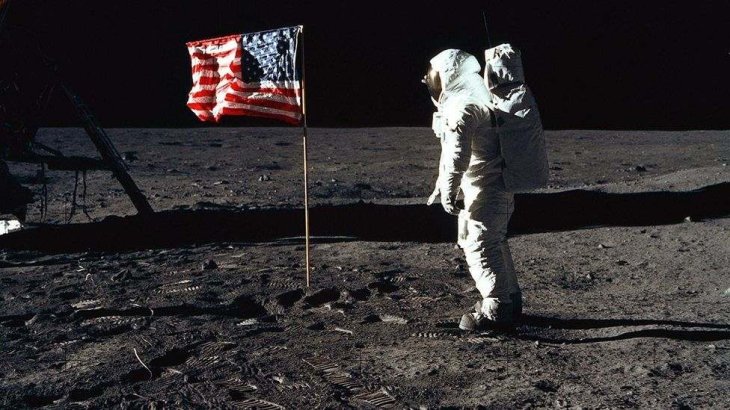This Female Mathematician Double-Checked All The Calculations Of An IBM Computer To Send Human To Space
Aadhya Khatri - Jul 28, 2019

Katherine G. Johnson was the one who helped send human to space. She was a dedicated and talented African-American mathematician
- The First Space Hotel In The World Will Welcome 400 Guests
- Startup Builds Vehicle With Soviets Tech To Collect Space Garbage
- World's First Space Hotel To Begin Construction In 2025 With Rooms For 400 Guests
Those who have watched the movie 'Hidden Figures' might be familiar with the name Katherine G. Johnson. She was the one who double-checked the results of the IBM computers so that John Glenn, an astronaut, could have a safe voyage to space. The movie portraits her as a competent and talented person, but in real life, she is even more so.
She Loved What She Did
Katherine Johnson showed love for numbers at an early age. She liked to count everything, from the number of dishes she had washed to the stars. Her talent qualified her for attending high school at the age of ten. She did great in school and went to college when she was just 15 years old.
William Waldron Schieffelin Claytor, a professor at West Virginia State College and one of the first African-American to hold a Ph.D. in mathematics, recognized her talent, so he mentored Johnson and encouraged her to pursue math.
In 1937, she graduated with highest honors and then shortly after that, started teaching. While she did not complete her graduate degree as she wanted to start a family, Johnson never forfeited the desire of becoming a research mathematician.
She Helped To Send Human To Space
After hearing from a cousin that NACA (short for National Advisory Committee for Aeronautics) was looking for African-American “computers,” she applied for the position after years of teaching and being a stay-at-home mother.

After Johnson was accepted, she and the whole family moved to VA so that she could realize her dream. In the year 1953, she started the job at Langley Research Center in Hampton. What she did was to do all the calculations to speed up the process of sending human to space.
Johnson got to do the job of her dream, and she loved it. Even though her eyes often got bleary for looking at small numbers for 14 to 16 hours a day, she said that she was always excited to go to work every day.
Johnson was especially good at geometry and equations; this was why she was admitted into the Space Task Force team to send the first man to the Moon.
She asked lots of questions and showed her ability as a leader. When she asked whether she could attend the briefing session where matters related to orbital trajectories were analyzed, the answer was no, but Johnson did not give up. She asked again if there was any law forbidding her from being in the room and found out about the real reason. It turned out that they rejected her request because women were not usually allowed in there.
Johnson later explained again and again that she needed to understand the trajectories so that she could make precise calculations. Later, she was the only female employee to be in that briefing room.
In 1960, she became the first woman to co-author a report with NASA engineers. She and Alan Shepherd were in charge of calculating the trajectory for the very first human trip to space, and she alone calculated what needed for the voyage of Apollo 11, the journey that sent the first human to the Moon.
However, these are not what Johnson was most famous for.
In 1962, Langley received an IBM computer that calculated the trajectory of John Glenn’s mission from take-off to splashdown. Since the computer was new and sometimes made mistakes, the astronauts requested Johnson to do all the calculations again by hand.

Here was what Glenn said:
She did the task in a day and a half, and the results were a match. The flight was a success and served as a turning point for the space race between the US and the Soviet Union.
She Has Inspired Generations Of Women
Johnson was among a tiny number of women working for NASA at the time, and she belonged to an even smaller number of African-Americans to be employed. She did the same workload but got paid less than her white colleagues and had to work in a separate area at the Langley Research Center.
She spent over 33 years at NASA and earned three Special Achievement Awards and three honorary doctorates. Johnson retired in 1986 and is recognized as one of the pioneers in space movements.
When she was 97 years old, president Obama gave her the Presidential Medal of Freedom, the highest honor for a civilian.

In 2017, NASA’s Langley Research Center named a new building after her, the Katherine G. Johnson Computational Research Facility. Last year, Mattel introduced the Katherine Johnson Barbie lineup.
Johnson achieved great success and honor as a mathematician, but she remained a modest person, true to her father saying:
She said in an interview in 2017 that she was inspired by Dorothy Vaughan, who worked as head of West Computing. Johnson also praised other women who had paved the way for space travel at her time.
Her dedication and talent in mathematics have brought her the fame and recognition she deserves, but according to Johnson, she was just doing what she was supposed to do.
Featured Stories

Features - Dec 18, 2024
6 Cutting-Edge Features of Galaxy AI & Lineup of Supported Samsung Smartphones

Features - Jan 23, 2024
5 Apps Every Creative Artist Should Know About

Features - Jan 22, 2024
Bet365 India Review - Choosing the Right Platform for Online Betting

Features - Aug 15, 2023
Online Casinos as a Business Opportunity in India

Features - Aug 03, 2023
The Impact of Social Media on Online Sports Betting

Features - Jul 10, 2023
5 Most Richest Esports Players of All Time

Features - Jun 07, 2023
Is it safe to use a debit card for online gambling?

Features - May 20, 2023
Everything You Need to Know About the Wisconsin Car Bill of Sale

Features - Apr 27, 2023
How to Take Advantage of Guarantee Cashback in Online Bets

Features - Mar 08, 2023


Comments
Sort by Newest | Popular